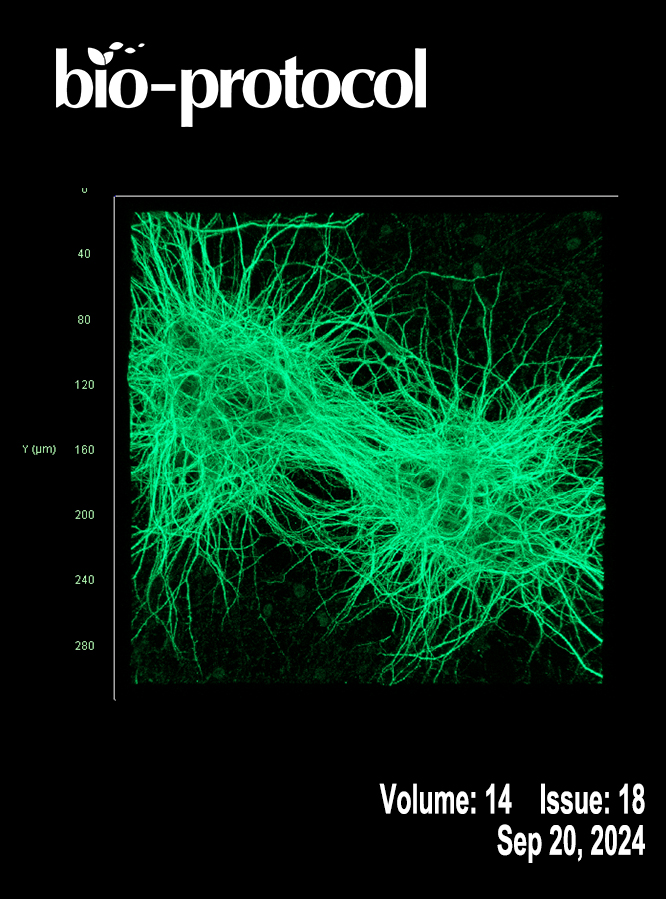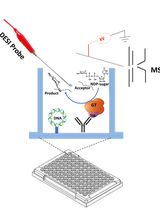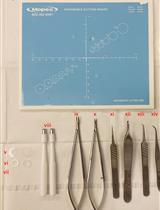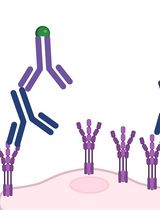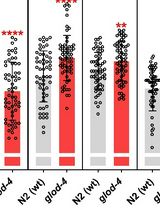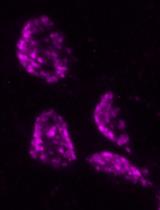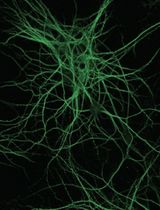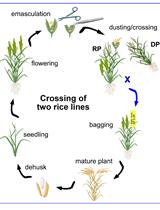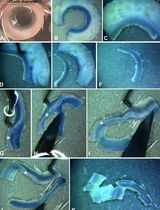往期刊物2024
卷册: 14, 期号: 18
生物化学
In Vitro GT-array (i-GT-ray), a Platform for Screening of Glycosyltransferase Activities and Protein–Protein Interactions
体外 GT 阵列 (i-GT-ray):筛选糖基转移酶活性和蛋白质相互作用的平台
生物工程
Protocol for the Implantation of Scaffolds in a Humanized Mouse Cutaneous Excisional Wound Healing Model
人源化小鼠切割性伤口愈合模型中植入支架的方法
生物物理学
Iterative Immunostaining and NEDD Denoising for Improved Signal-To-Noise Ratio in ExM-LSCM
通过迭代免疫染色与NEDD去噪提升ExM-LSCM的信噪比
医学
Mouse Renal Artery Catheterization for Local Delivery of Drugs in Capsulated or Free Forms
用于包封或游离形式药物局部递送的小鼠肾动脉插管
神经科学
Pharyngeal Pumping Assay for Quantifying Feeding Behavior in Caenorhabditis elegans
秀丽隐杆线虫进食行为的咽喉抽动实验
Expansion Microscopy of Synaptic Contacts on the Mauthner Cells of Larval Zebrafish
幼体斑马鱼毛特讷氏细胞突触连接的扩展显微镜研究
Development and Characterization of Primary Brain Cultures from Japanese Quail Embryos
日本鹌鹑胚胎原代脑细胞培养的开发与特性分析
植物科学
A Step-by-step Protocol for Crossing and Marker-Assisted Breeding of Asian and African Rice Varieties
亚洲和非洲水稻品种杂交与标记辅助育种逐步指南
干细胞
A Full Good Manufacturing Practice–Compliant Protocol for Corneal Stromal Stem Cell Cultivation
符合GMP标准的角膜基质干细胞培养全流程


